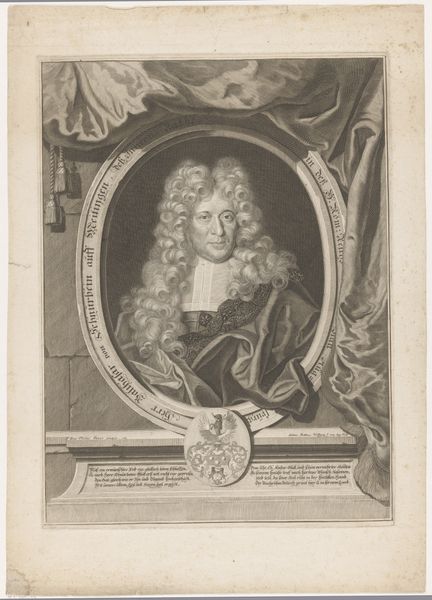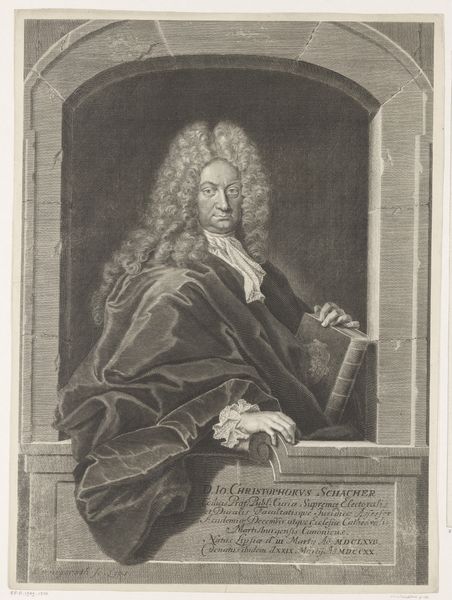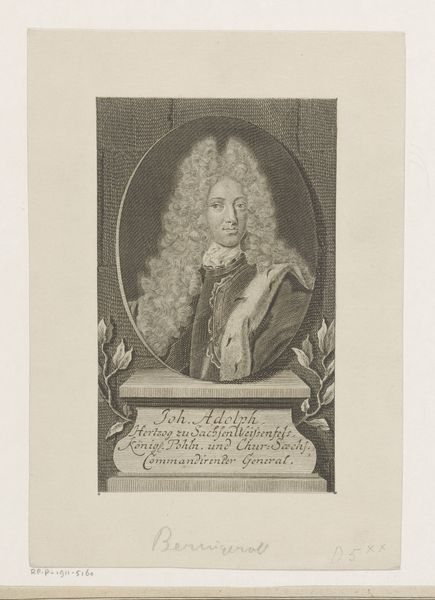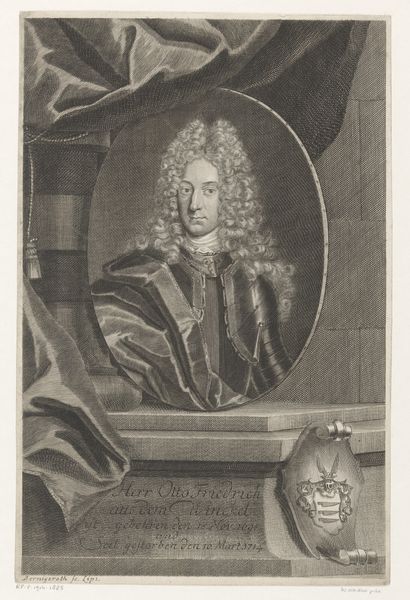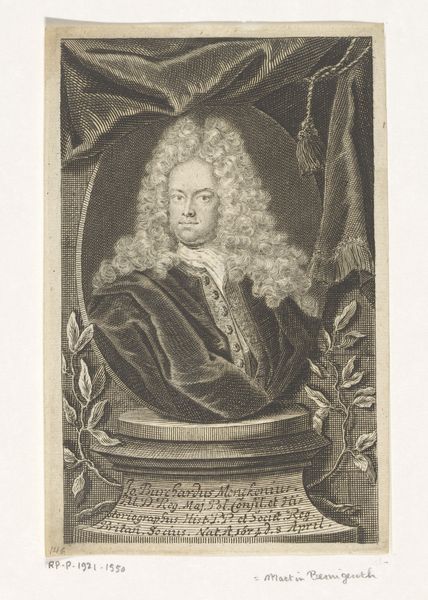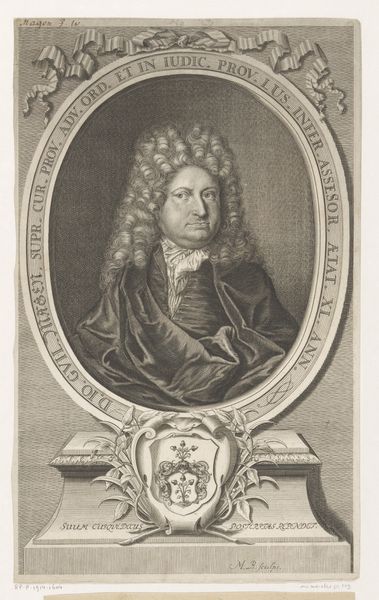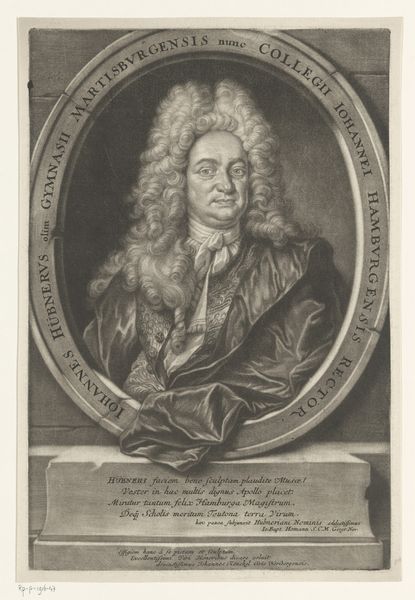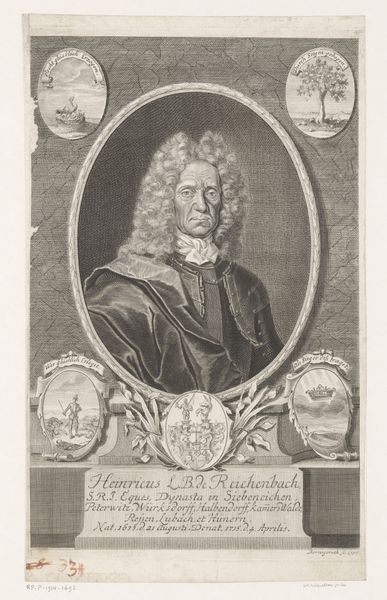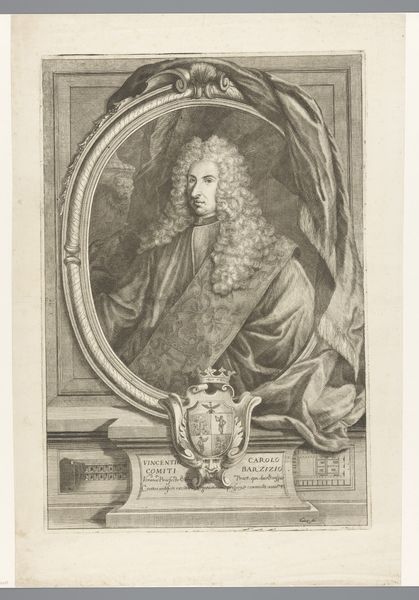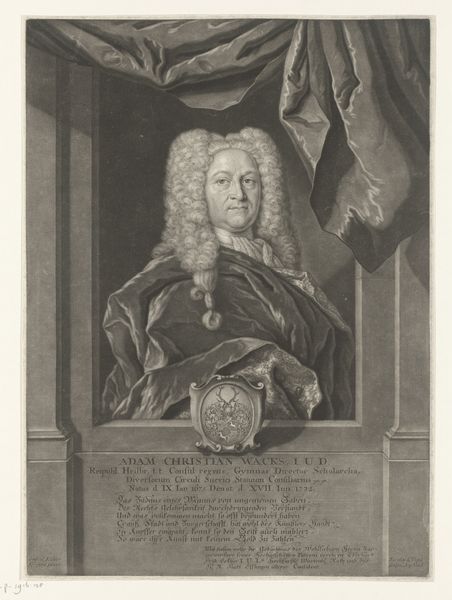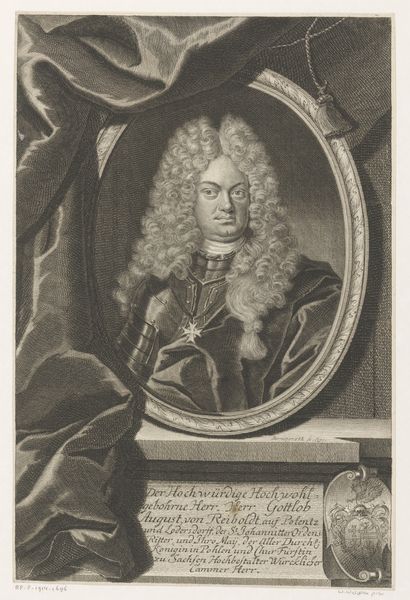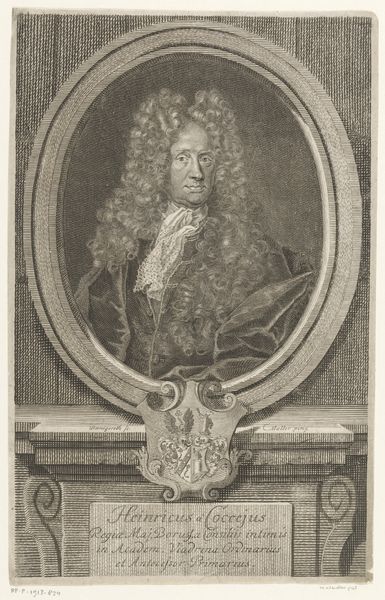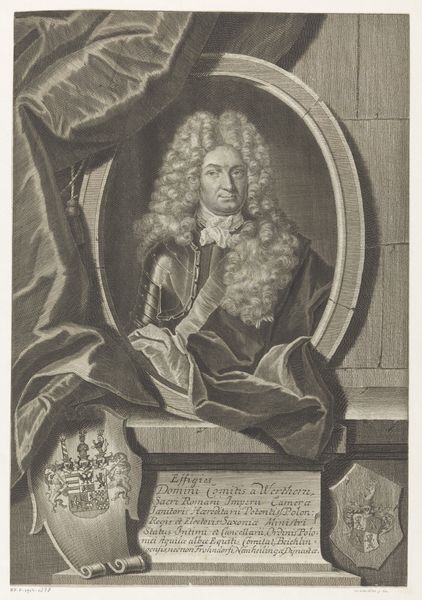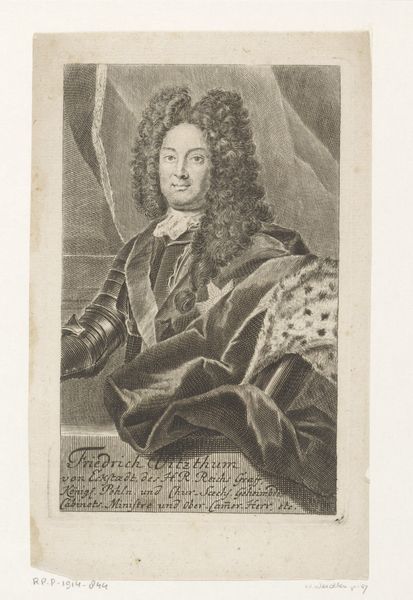
print, engraving
#
portrait
#
baroque
# print
#
portrait reference
#
history-painting
#
engraving
#
portrait art
#
fine art portrait
Dimensions: height 353 mm, width 236 mm
Copyright: Rijks Museum: Open Domain
Curator: I see authority, even arrogance, in the tight-lipped expression. Editor: Indeed. This is "Portret van Valentin Voit von Salzburg," an engraving by Martin Bernigeroth, dating from 1722-1733, held at the Rijksmuseum. Bernigeroth really captures the conventions of Baroque portraiture here, wouldn't you agree? Curator: Absolutely, the symbolic language is rich. Note the wig – a waterfall of status, literally framing the face. The helmet, though...that tells a story too. Editor: It's intriguing, isn't it? Placed almost casually on the ledge. It's likely meant to allude to Valentin Voit’s military or administrative roles – perhaps as a councillor for military affairs, judging by the inscription at the bottom. Curator: The juxtaposition is key. The helmet signifies power, defense, perhaps past battles. But his grip is so relaxed; almost nonchalant, the power feels secure, hereditary. He almost scoffs at having to hold the trappings of leadership. Editor: Perhaps. Or is it a reminder of mortality? A "memento mori" nestled beside the symbols of his earthly authority? Baroque art often dances with those themes. What of the coat of arms in the top-right? Does it speak to ancestral connections and a personal motto? Curator: Definitely, It's an assertion of lineage, solidifying his place in the socio-political hierarchy. It's less about the man, Valentin, and more about the office, the family name, the *continuity*. Editor: This engraving then, performs a specific social function. Reproducing and disseminating this image bolsters Valentin Voit's public image, broadcasting his importance and anchoring his identity within a web of historical and political connections. Curator: Which is why Bernigeroth probably gave special attention to surface textures, like the folds in the drapery behind him. A study of visual and tangible power! Editor: Absolutely. It speaks to the craftsmanship that helped forge these types of representations of authority during this period. It makes you wonder how Voits would receive art like this today! Curator: One can imagine he would hope that his image continue to signify power as it once did. The symbolism carries memory—desired and, inevitably, lost—across generations.
Comments
No comments
Be the first to comment and join the conversation on the ultimate creative platform.
